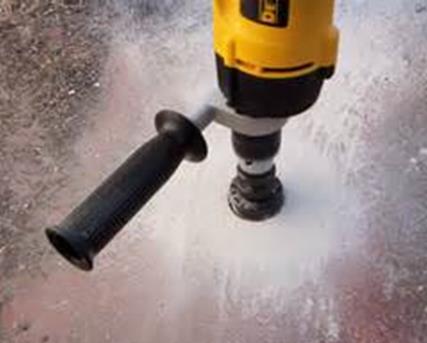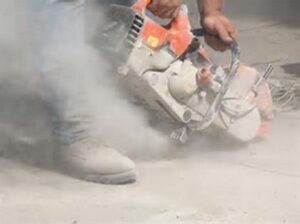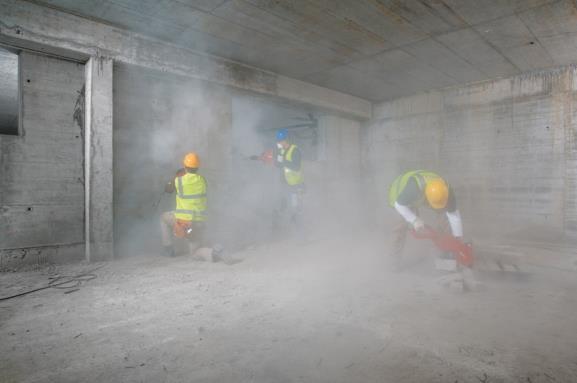Hazard:
Crystalline silica is a common mineral found in the earth’s crust. Materials like sand, stone, concrete, and mortar contain crystalline silica. Respirable crystalline silica, primarily quartz dusts occurring in industrial and occupational settings, is known to be a human carcinogen and hazardous when (respirable) particles are inhaled. Ongoing exposure to this dust can cause silicosis, lung cancer, other respiratory diseases, and kidney disease. VSC employees may be exposed to silica when using power tools to drill into or cut into brick, concrete, or masonry block. Common tasks include: Core drilling or installing anchors when installing sprinkler pipe; and sawing into, or using a jackhammer to cut holes into concrete when installing a riser between floors. Exposure can also occur when cleaning up concrete dust that has accumulated on jobsites, tools, equipment and even your clothing.



Preventative Measures:
OSHA has issued a Silica Rule to protect employees from the hazards associated with inhaling concrete dust. VSC will follow the Exposure Control Methods established by OSHA in “Table 1” of the Silica Rule.
- Tools: (silica dust control methods) You are required to use Drills that are equipped with a commercially available shroud or cowling with a dust collection system; Saws that are equipped with an integrated delivery system that continuously feeds water to the blade; Jackhammers used with a water delivery system that supplies a continuous stream or spray of water at the point of impact, or a Jackhammer equipped with a commercially available shroud and dust collection system. All tools must be operated and maintained in accordance with the manufacturer’s instructions to minimize dust emissions.
- Respiratory Protection Equipment: VSC employees will not perform any tasks requiring the use of a respirator. No dry core saw cutting or drilling into concrete without the silica dust control methods as described above.
- Clean-up (Housekeeping): You cannot dry sweep concrete dust. When cleaning up accumulations of concrete dust you must use a wet broom, apply a commercially produced wet sweeping compound, or use a HEPA- filtered vacuum! When disposing of concrete dust still in its powdered form, use a sealed bag and place it in the trash! Personal Hygiene: Wash exposed skin with water and soap. First Aid is not required. Review the SDS!
- Other Contractors (Dust Emissions created by other trades): When you are working on job-sites and other trades are sawing, drilling, jackhammering, etc. and creating concrete dust, you are restricted from working in that area unprotected. When this occurs, you need to contact your manager or VSC’s Regional Safety Manager for additional instruction.
